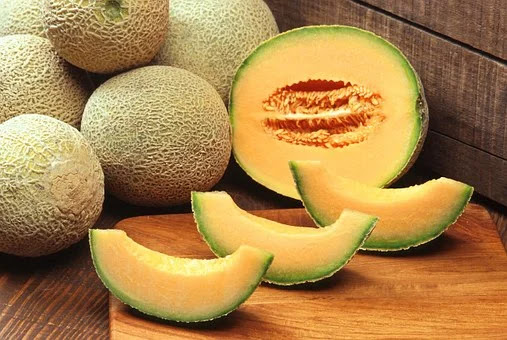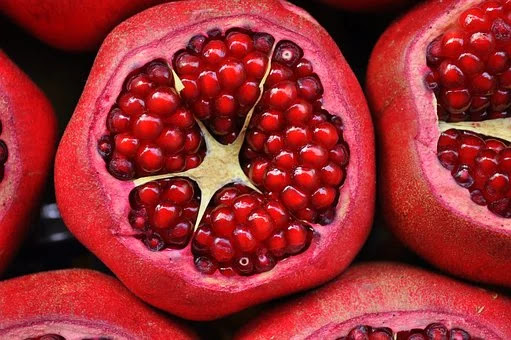56 Fascinating facts about Fruits
Rose-family:
1. Apples, peaches and raspberries are all members of the rose family.
Apple:
2. Apples float in water because they are 25% of air.
3. Apples increase mental alertness, as they contain high levels of boron.
4. Consuming an Apple gives us more energy than taking a cup of coffee.
5. An apple tree will start bearing fruit 8-10 years after it is planted.
6. Apples are one of those fruits that are available for sale all over the year, even though the actual season for harvesting is rather short. But the boon of biotechnology enables apple to become stored and preserved, between the gap of being harvested and selling them in the market. So in short, an apple purchased and eaten today, may actually be up to a year old.
Actually they are not berries at all!
7. Blackberries, Strawberries are not technically berries as they are derived from a single flower with more than one ovary, making them an aggregate fruit. True berries are simple fruits stemming from one flower with one ovary and typically have several seeds including, the tomato, pumpkin and watermelon.
Strawberries:
8. Almost 300 years ago the strawberry was first cultivated in Brittany, France.
It is a flowery plant also. However in ancient times strawberries were considered as herbal plant.
9. When strawberries first became commercial products, the plants were cultivated in straw. So many people assume from that they got their name.
10. Actually, strawberry seeds aren't really seeds. They are 'achenes', which are actually tiny fruits that contain seeds. This happens because strawberry is an aggregate fruit.
11. As strawberries contain natural salicylates, an ingredient found in aspirin, it can cure headache.
Black berries:
12.The scientific study of blackberries is called ‘batology’.
13. Unripe blackberries are actually red. Usually most fruits are green before they ripen to their usual colour, but blackberries actually initiate their life as red. Upon ripening, they change from red to black.
Berries:
14. Raspberries aren’t always red. Except red the available colours of raspberries are gold, yellow, black & purple. The gold raspberries are the sweetest among red, purple, yellow & black ones.
15. Unlike other fruits, raspberries don’t ripen any more once they have been picked.
16. Blueberries make a great natural food dye if anyone want to avoid the idea of using synthetic food dye.
17. Cranberries can bounce because of tiny air pockets inside of them, which allow them to float and bounce. The higher a cranberry bounces, the better the cranberry.
18. One of the best things about berries is their link to brain health. They reduce inflammation, protect brain cells from free radicals, increase neuroplasticity and much more.
19. One of the best things about berries is their link to brain health. They reduce inflammation, protect brain cells from free radicals, increase neuroplasticity and much more.
Cherries:
20. The average cherry tree has 7,000 cherries.
21. There are two main types of cherries: sweet and tart.
22. Japanese cherry blossom trees don’t produce fruit.
Traverse City, Michigan, is known as the Cherry Capital of the World.
Cantaloupe:
23. The European cantaloupe and the American cantaloupe, are both cantaloupe but they are quite different from each other. The European cantaloupe has a smooth gray-green skin while the American cantaloupe has a tough net-like skin.
24. Cantaloupe originated in ancient times in India and Africa but soon found their way to Europe.
25. Cantaloupe is named for the papal gardens of Cantaloupe, Italy, where some historians say this species of melon was first grown.
26. Cantaloupe was first introduced to North America by Christopher Columbus on his second voyage to the New World in 1494.
Grapes:
27. Grapes once picked, are unable to ripen.
28. Grapes and raisins can be fatal to dogs and other pets as it can cause kidney failure.
The largest fruit- Jackfruit
29. The jackfruit has been determined to be the largest tree fruit in the world. The jackfruit can weigh as much as 100 pounds. There have been jackfruit that has grown as tall as 4 feet in height!
Coconut:
30. Coconuts contain antioxidants and many vitamins and minerals.
31. The name coconut comes from Portuguese sailors during 16th century.
32. It has been believed that the three holes on the coconut resembled a face, so the fruit was honored with the word ‘coco,’ meaning ‘grin’ or ‘grinning face.’ The nut part was added later on with the English language.
Oranges:
33. Oranges are the largest citrus crop in the world.
34. Brazil is the leading orange-producing country in the world while Florida and California together produce nearly 25 billion pounds of oranges each year!
35. Florida oranges may be greener than California oranges because the night temperatures in Florida are warmer, which causes more chlorophyll to migrate into the peel. In spite of that they are also ripe and sweet.
36. There is more fiber in an orange than in most other fruits and veggies.
37. Technically the orange is a berry called hesperidium, indicating that the fruit has sections and grows on evergreen trees.
38. The peel of an orange fruit has four times more fiber than the actual fruit. There are also a significant amount of antioxidants in the peel too.
39. The peels of oranges contain essential oils that are used aromatherapy, cleaning products, and cooking.
40. Contrary to what most of us think, this fruit was not named for its color. Instead, the word orange comes from a transliteration of the Sanskrit 'naranga', which comes from the Tamil 'naru', which means "fragrant."!
Banana
41. There are over 1,000 different varieties of bananas in nature but most of them are not good to eat.
42. Most bananas sold in stores today are the Cavendish Banana chosen because of its resistance to a fungal disease. Although it is resistant to that one disease, it is now being threatened by others and because of a lack of genetic diversity, the entire banana species is at risk of being eradicated.
Watermelon:
43. People used to carry around watermelons to stay hydrated.
44. Watermelons are 92% water. Since this melon had thick skin which kept water inside, it was a perfect form of libation for explorers and people roaming the desert.
Pineapple
45. A pineapple is not an "apple" it is actually a berry.
46. Each pineapple plant only produces one pineapple per year.
47. Most fruits develop in 3 to 4 months, but it takes about 18 months to two years for a pineapple to grow to its full size.
48. The name "pineapple" came from European explorers who thought the fruit looked like a pinecone with flesh like an apple.
49. The pineapple is a combination of many individual flowers, or berries fused together around a core. Pineapples contain about 75% of the daily recommended amount of manganese for strong bones. It takes three years for a pineapple to mature.
Avocados
50. Avocados contain the most fat of any fruit or vegetable on the planet. Since avocado trees release an enzyme that prevents the fruit from maturing fully while on the tree, farmers can use the trees to store avocados until ready to go to market.
Guava
51. Guavas contain 4 times more fiber than a pineapple and 4 times more vitamin C than an orange.
52. Due to the rich fibre content and low glycaemic index, guavas prevent the development of diabetes. While the low glycemic index inhibits a sudden spike in sugar levels, the fibre content ensures the sugar levels are well regulated.
54. Guava fruit helps improve the sodium and potassium balance of the body, thereby regulating blood pressure in patients with hypertension. Guavas also help lower the levels of triglycerides and bad cholesterol (LDL), which contribute to the development of heart disease. This magical fruit improves levels of the good cholesterol (HDL).
Pomegranate:
55. Pomegranates are native to the Middle-East.
56. A pomegranate may contain 1000 seeds.
56 Most fascinating facts about Fruits
 Reviewed by Antara
on
August 11, 2020
Rating:
Reviewed by Antara
on
August 11, 2020
Rating:
 Reviewed by Antara
on
August 11, 2020
Rating:
Reviewed by Antara
on
August 11, 2020
Rating:
























No comments: